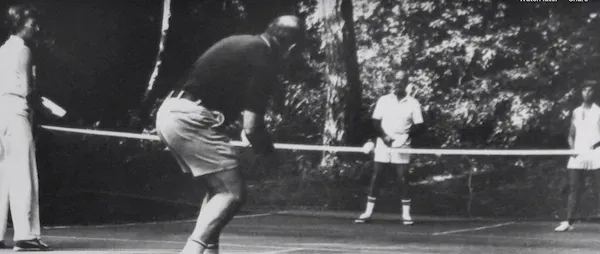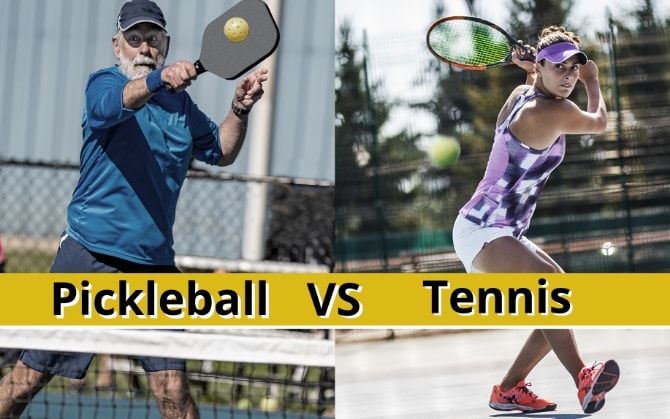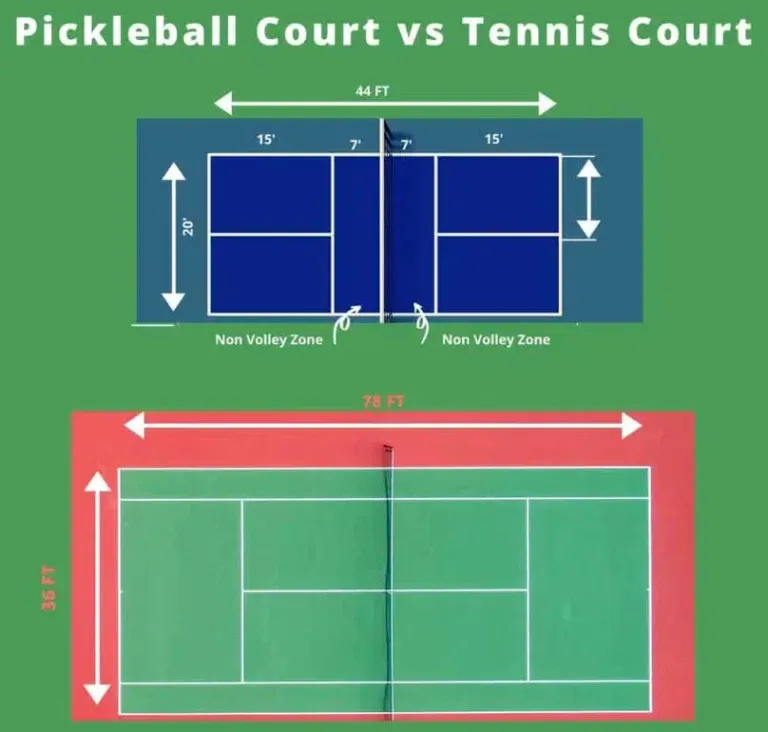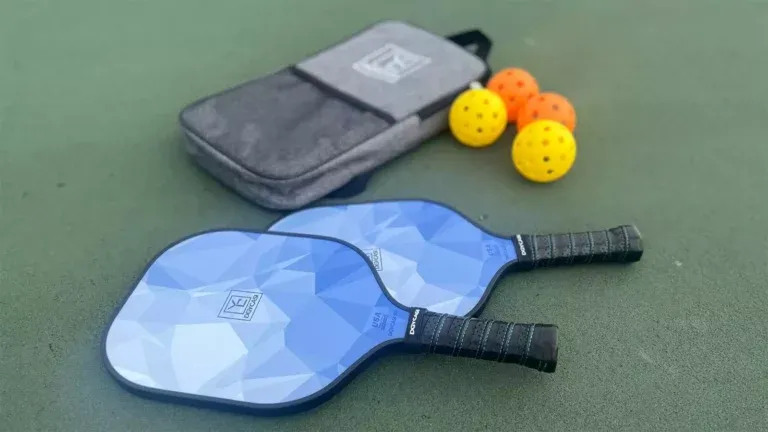Understanding the appeal of pickleball
The growing enthusiasm for pickleball can be attributed to numerous factors, making it a favorite among beginners and seasoned athletes alike. As it blossoms into a mainstream sport, let’s grasp the fundamentals of pickleball, what distinguishes it from tennis, and why it continues to capture the hearts of a diverse range of players.
Pickleball 101: What you need to know
Originally invented in 1965, pickleball amalgamates elements from tennis, badminton, and table tennis, establishing its own unique identity. The primary objective of the game is straightforward: players hit a ball over a net, aiming to prevent their opponents from returning it. Upon finding the basic mechanics easy to grasp, beginners quickly fall in love with the dynamic interactions and strategic gameplay that pickleball offers.

- Court Size: Pickleball courts measure 20 by 44 feet, significantly smaller than tennis courts (36 by 78 feet for doubles).
- Equipment: Players use paddles lighter and smaller than tennis rackets making for ease of handling.
- Ball Dynamics: The lighter, perforated plastic ball results in varying flight characteristics compared to a typical elastic tennis ball.
- Scoring System: Pickleball has a simpler scoring system, typically played to 11 points, allowing for quicker games.

These distinct aspects of pickleball not only serve to level the playing field for novices but also enhance the social enjoyment, making the sport universally appealing.
Why pickleball is exploding in popularity
Recent statistics underscore the rapid growth of pickleball, with millions now participating globally. The sport’s accessibility is climaxing its appeal, particularly for casual players and those with limited experience in racquet sports. Its slower pace, coupled with a variety of social aspects, permits interaction among players in ways that are less typical in more strenuous sports like tennis.

Factors contributing to this rise include:
- Ease of Learning: Newcomers can quickly grasp the fundamentals, leading to early success and enjoyment.
- Lower Impact on Joints: Compared to tennis, the smaller court dimensions necessitate less running, making it easier on the body.
- Strong Community Aspect: Many pickleball games take place in community settings, breeding camaraderie and connection among participants.
- Health Benefits: A wealth of research, such as studies from the Journal of Sports Sciences, highlights the cardiovascular and social health benefits that come with engaging in pickleball.
In summary, these elements significantly contribute to pickleball’s surging numbers, illustrating how a simpler approach to a sport can bolster its community and overall enthusiasm.
Adapting your tennis skills to pickleball
Transitioning from tennis to pickleball can be smooth and exciting. While both sports have their unique elements, tennis players possess a foundation of skills that can adapt well to pickleball. By adjusting one's perception of court dimensions, equipment, and gameplay strategies, tennis players can find themselves thriving in this new environment.

The pickleball court: A new playing field
One of the most apparent shifts in transitioning from tennis to pickleball is the court size. With pickleball courts being halved in length and width when compared to tennis courts, players will find that their movement strategies and positioning will require a new understanding.

Court Dimensions:
| Feature | Tennis Court | Pickleball Court |
|---|---|---|
| Dimensions (Doubles) | 36 feet by 78 feet | 20 feet by 44 feet |
The presence of the “kitchen" or non-volley zone, adds another strategic layer to the game. Located close to the net, this area prevents players from “spiking” volleys, introducing a new approach to forming strategies around deception and ball placement. Tennis players might find it a refreshing change to focus on placement rather than raw power.
Pickleball equipment: Paddles, balls, and more
Understanding the equipment required for pickleball is crucial when transitioning from tennis. Players will utilize paddles that are crafted from lightweight materials, making them easier to swing compared to traditional tennis rackets, which are generally heavier.

Equipment Comparison:
| Equipment | Tennis Racket | Pickleball Paddle |
|---|---|---|
| Weight | Heavier, often 10-12 oz | Lighter, typically 6-8 oz |
| Size | Larger head, designed for powerful strokes | Smaller surface area, better for control |
| Material | Made from composite or aluminum | Commonly uses wood, composite, or fiberglass |
| Ball Characteristics | Solid, more elastic | Lightweight plastic with holes, semi-soft |
These distinctions not only adjust the way players generate power and control their shots but also streamline the overall gameplay experience, emphasizing finesse over sheer force.
Mastering pickleball strokes: From tennis to dinking
As players migrate from tennis to pickleball, mastering the different strokes becomes an exciting challenge. Notably, the dink shot has captivated many players due to its strategic importance. While drop shots in tennis can share similarities, the dink play requires a much subtler touch, focusing on precision and placement rather than power.

Key Stroke Comparisons:
- Dinking: This involves gently hitting the ball into the kitchen zone, creating opportunities for winning plays.
- Volleys: Unique to pickleball, the kitchen rule restricts spiking at the net, making precise volleys more critical than in tennis.
- Groundstrokes and Lobs: While similar, groundstrokes in pickleball require adaptations to wrist action and touch due to the different ball characteristics.
As players refine their techniques, focusing on grip adjustments and swing mechanics becomes essential to fully embrace the pickleball style.
Strategic play and the mental game
In both pickleball and tennis, possessing a strong mental game can move players towards victory. However, the strategies employed can differ significantly between the two sports. Pickleball emphasizes shot placement and tactical decision-making, diverging from the power-driven mentality often seen in tennis.
Pickleball strategy 101: Thinking beyond power
A defining characteristic of pickleball is its focus on strategic play over brute strength. The concept of the “soft game” comes into play, prioritizing finesse and placements, rather than solely attacking the ball. Being adept at dinking opens pathways to exploit opponent weaknesses.
Focus on:
- Shot Selection: Choose wisely between power shots and strategic placements.
- Tactical Approaches: Stay adaptable; whether employing power plays or softer shots depends on the game dynamics.
- Differences in Strategic Thinking: Understand when to engage and when to retreat, adapting to the flow of the match.
The mental edge in pickleball: Patience, anticipation, and quick reactions
With rallies often being longer and requiring more strategic depth, cultivating patience is essential for success in pickleball. Unlike the quicker exchanges of tennis, players must learn to anticipate the opponent’s moves and be flexible in their reactions.
Strategies for success include:
- Being Mentally Prepared: Developing an understanding of how to play not just with physical aptitude but mental acuity.
- Quick Decision-Making Skills: During games, fast choices can lead to advantageous positions.
- Anticipating Opponent's Moves: This knowledge sets the foundation for countering their strategies effectively.
These mental attributes underscore the notion that while pickleball may appear simpler, it carries its strategic depth.
Physical demands and transition tips
Despite its reputation as a gentler alternative to tennis, pickleball still demands a level of fitness and agility from players. Transitioning effectively from tennis involves understanding the fitness dimensions necessary for pickleball.
Pickleball fitness: Training for agility and quickness
While more accessible, pickleball engages players physically, emphasizing agility and quickness tailored to the smaller court size. Here are some tips to maintain optimal fitness:
- Agility Exercises: Incorporate lateral movement drills into your routine to bolster on-court responsiveness.
- Strength Training: Focus on core stability and lower body strength through various exercises.
- Flexibility Routines: Enhance range of motion to adapt comfortably to pickleball movements.
These exercises will not only enhance overall performance but also help mitigate injury risks commonly associated with sports transitions.
Making the switch: Tips for tennis players
For tennis players exploring pickleball, a wealth of resources and tips can assist in making that switch smoother and more enjoyable.
- Finding Pickleball Courts: Platforms like Places2Play or the USA Pickleball Association directory offer insights into local courts and clubs.
- Taking Lessons: Certified pickleball instructors can facilitate quick adaptation, guiding new players through the distinct nuances of the game.
- Joining Communities: Engaging with local pickleball communities be it forums or meetups can create a supportive environment for learning and growth.
Being proactive in these areas will make the transition experience richer and more rewarding.
Is pickleball easier than tennis?
The dichotomy of comparing pickleball to tennis often yields subjective conclusions. Factors such as individual skill levels, physical abilities, and personal preferences largely dictate the answer to whether one sport is easier than the other.
The verdict: It depends on your perspective
In analyzing the key areas court size, equipment, rules, and physical demands pickleball emerges consistently as a more accessible sport. However, the notion of ease is highly subjective. For some, tennis challenges have ingrained depth that is ultimately rewarding, while others may find the community and approachability of pickleball more gratifying.
In conclusion, the easiest way to determine which sport resonates more with you is to experience pickleball firsthand. With its unique charm and social environment, trying out pickleball may enlighten tennis players, unveiling a new opportunity for enjoyment and connection in the racquet sports landscape. The choice ultimately lies in what you seek from your sporting experience.










